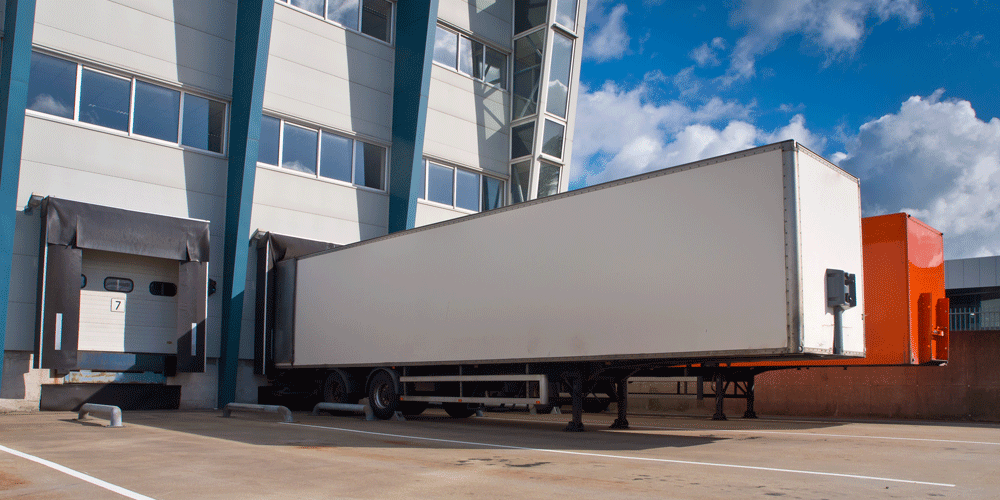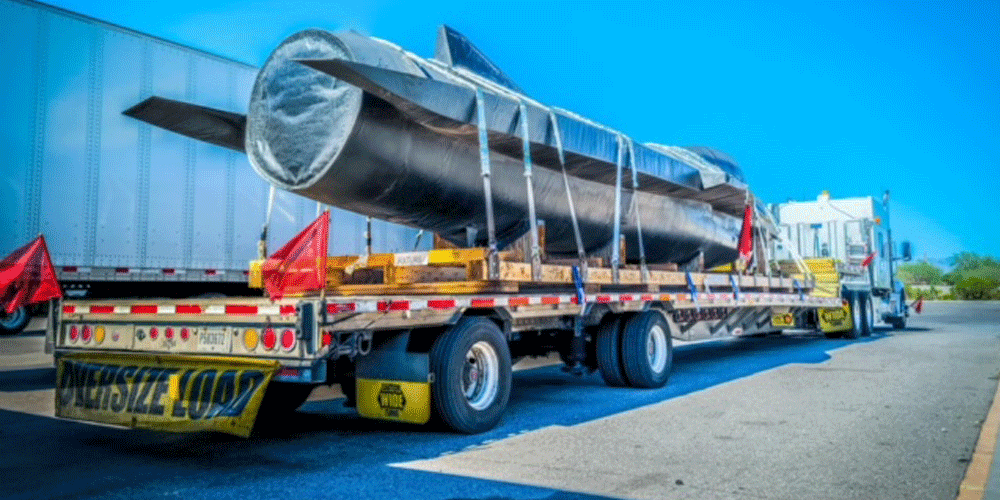How Do I Maintain My Trailer? [4 Dry Van & Flatbed Trailer Maintenance Steps]
Charles worked as a lead mechanic at ATS from 2000 to 2008. He came back to ATS in 2020. Charles currently acts as the shop manager for the Porter, Indiana ATS facility. As the shop manager, he oversees the whole facility – ensuring everything runs smoothly.
Tractors get a break. Trailers don’t. You pick them up, haul them and put them back down. Then they get picked right back up. Tractors, at least, get to take a break and rest overnight.
If you’re at a company where drivers are regularly switching trailers and they don’t have a dedicated trailer, it can be frustrating. You can hold yourself accountable for maintaining your tractor, but you have to count on other drivers to maintain the trailers and report issues.
When issues go unreported and unfixed, it’s incredibly frustrating to pick that trailer up next and try to haul freight with it. Unfortunately, you may have experienced a time when you went to pick up a trailer only to discover it had to go to the shop before it could haul any freight.
Some companies require drivers to pay a regular trailer rental fee; some do not. If you’re paying a regular trailer rental fee, it can be especially frustrating to try to work with damaged trailers. You may have to pay for repairs, too.
It’s in every driver’s best interest to maintain the trailers you use. For starters, driving with a broken trailer is an invitation to get a violation at a roadside inspection. Not only that, but it’s also good driver etiquette to maintain trailers for the next driver. It’ll save everyone valuable time and money.
At Anderson Trucking Service (ATS), drivers have access to a wide range of trailers to haul dry van and specialized freight. Drivers aren’t required to pay a trailer rental fee.
Knowing how to hook up and haul the trailers you utilize is important for trailer breakdown prevention. It includes four steps:
- Do your pre-trip and post-trip inspections
- Report damage in a timely fashion
- Drive safely
- Get assistance hooking up unfamiliar trailers
Following these practices are the key to maintaining every trailer you use.
Step 1: Do Your Pre-Trip and Post-Trip Inspections
Pre-trip inspections ensure your vehicle is roadworthy. Post-trip inspections help you find any damage that occurred while you were driving. These inspections aren’t just for your tractor; they’re for your trailer, too.
Every time you start driving after a 10-hour break or change trailers, do a pre-trip inspection. Especially when you change trailers, you need to look at what you’re getting. Is it in good working order? Does it already have damage?
You don’t necessarily need to crawl underneath the trailer to see that it’s in good working condition. There are issues that are easily within your scope to find.
Your primary focus should be on lights and tires. We often see violations related to tires and these issues are easy to find, unlike others. Put an air gauge on each tire to ensure they’re inflated to the proper pounds per square inch (psi).
Kicking the tires or just glancing at them isn’t an effective method of checking them. The tire could look full but be 70 psi. Anything under 80 psi is considered a flat tire. If you’re caught with a flat tire at a roadside inspection, you’ll be getting a violation that comes with high points that’ll go against your carrier’s Compliance, Safety and Accountability score (CSA).
ATS requires all tires to be above 100 psi, but you can see how full your tires need to be by looking at the sticker near the tires.
If you carry an inflation cord hookup, you can easily inflate your tires yourself.
You should also monitor tread depth. The Department of Transportation (DOT) requires steer tires to be at least 4/32 inches deep. The drive tires should be at least 2/32 inches deep. Your company may require something different.
Make sure all the tires turn and aren’t locked up. If you drive with locked tires, even a short distance, you can easily ruin a brand-new set of tires.
Listen for audible air leaks. To do this, you’ll need to have your truck shut off. Make sure you have air in your airbags and there aren’t leaks.
Make sure each light is working. You can receive violations at roadside inspections if a light is out.
Step 2: Report Trailer Damage
Treat the trailer like it’s yours. If you owned the trailer you’re hauling right now, would you get it fixed?
Of course, everyone isn’t the same. Different drivers have different expectations about what’s good enough and what isn’t, so they have different ideas of what should and shouldn’t be fixed.
One driver might see a cracked weld or a scratched sticker and want it fixed, no matter how minor it is. They want the trailer to be perfect when they pull it. Another driver might not care if it’s scratched up and barely legal.
Most drivers are guilty of leaving behind a trailer that they didn’t get fixed. All drivers need to get better at reporting damage and getting it fixed.
When you find issues with your trailer during pre- and post-trip inspections, report them to your company. It helps protect you and other drivers on the road.
If you decide to drive with damaged equipment and you get caught at a roadside inspection, you’ll get violations that show up on your pre-employment screening (PSP) report. If you have too many violations, you may not get hired at certain carriers.
Additionally, the points contribute to your carrier’s CSA score. If every driver in your fleet also gets a lot of violations, the company’s CSA score rises and affects every driver in the fleet. It’ll be harder for the company to secure customer contracts at a premium price and you’ll be pulled into weigh stations for more inspections.
Getting a violation is the best-case scenario. The worst-case scenario is that the trailer malfunctions, causing an accident that harms you and/or fellow drivers.
Related: How CSA and ISS Scores Affect You and Your Carrier
Step 3: Drive Safely
It should go without saying that you should drive safely with and without a trailer. It’s fairly easy to damage trailers, and as we said before, trailers never get a break as tractors do.
Trailers are easy to damage. The sides of a van trailer are fairly soft. You could take a baseball bat to the thick sheet metal and do some damage. They’re big and bulky, making it easy to bump them into something. Just imagine what could happen if you hit the side of a building or a bridge or an overpass. You can easily rip the top right off.
Flatbed trailers are also easily susceptible to damage. Running over curbs, hitting things like buildings or concrete barriers — all of this can damage the trailer. But another way you can damage flatbed trailers is by hooking them up incorrectly.
Step 4: Hook Up the Trailer Properly — Or Ask for Help
This goes for all you flatbed drivers that are having trouble hooking up trailers that you’re unfamiliar with: Ask for help.
If you’ve never hooked up to the trailer you’re about to haul or you’re just not comfortable hooking up to it, reach out to your company or a fellow driver for tips. At the very least, Google it. It’s very easy to damage trailers when you don’t know how to hook up to them.
When you’re backing up to a new trailer, banging into it impatiently and repeatedly isn’t going to do you or the trailer any good. Back up slowly and gauge where the fifth-wheel lines up. Don’t ram it into the trailer to get it to hook up.
If you don’t align properly, you can easily cause some extra wear and tear. High hooking or dropping the trailer can damage the trailer.
Maintain Your Trailer and Truck
Taking the extra time out of your day to do your pre-trip and post-trip inspections will go a long way in preventing trailer violations and accidents.
It may be annoying to have time spent away from hauling loads to get the trailer fixed, but it needs to be done and it’s a part of good driver etiquette. Just make sure you have a good shop fixing the trailer.
At ATS, we thoroughly inspect our trailers to ensure they’re roadworthy. We have in-depth reports that record how often they’re serviced and the last time they were in one of our shops. That said, we can’t fix a trailer in a timely fashion if we don’t know anything is wrong with it. So please, let your carrier know when something is wrong.
It’s equally important that you maintain your tractor. Follow these preventative maintenance tips, in combination with the trailer maintenance tips above, to ensure your truck and trailer are operating optimally and you can keep moving.
![How Do I Maintain My Trailer? [4 Dry Van & Flatbed Trailer Maintenance Steps]](https://blog.drive4ats.com/hubfs/Images/Blog/Trailer%20Maintenance/PlatformTrailerFeatured.png)



